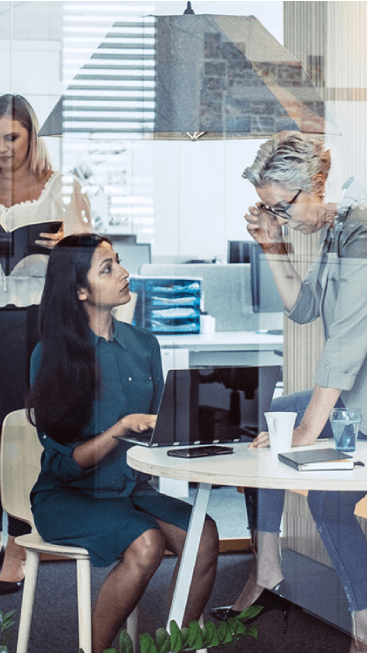3 ways IT and HR can use employee experience to attract and retain top talent
May 1, 2022 / Weston Morris
Short on time? Read the key takeaways:
- Collaboration between CIOs and CHROs is crucial for a successful digital employee experience (DEX).
- CHROs should share digital workplace requirements with CIOs for better technology alignment with top talent expectations.
- Weekly collection and analysis of employee sentiment data through digital experience monitoring (DEM) tools and surveys can help identify trends and improve employee satisfaction.
- Sharing employee experience data between IT and HR can help attract and retain top talent and drive overall business growth.
Employee desire for flexible work options is here to stay. An emerging dynamic between forward-thinking CIOs and chief human resource officers (CHROs) — who traditionally don’t collaborate on joint initiatives — offers a promising method to cultivate exceptional employee experiences, regardless of where employees are located.
Employees are looking for companies that prioritize the employee end-user experience (EUX)—or, more specifically, ditching leadership that doesn’t provide the technologies and infrastructure required for their workforce to succeed in the new digital workplace. CIOs and CHROs now work together to elevate EUX to keep their organizations competitive in the fight for top talent.
When Information Technology (IT) and Human Resources (HR) share data and insights, they can better collaborate to support employees’ needs. Here are three ways this partnership can help your organization attract and retain employees.
1. HR and IT can no longer operate as disparate functions with different missions and strategies.
Instead, they must combine efforts around a shared digital employee experience (DEX) vision.
Historically, employee experience data has been HR’s domain. In exit interviews and rejection letters from job recruits, HR sees firsthand what prospective employees expect from IT in digital workplace technology, from unified communication and collaboration platforms to company policies around IT security and flexible work hours. But as CIOs implement programs to measure, monitor and improve EUX, IT collects real-time data on employee satisfaction that can also benefit HR.
Both the CIO and CHRO have access to mutually beneficial data and insights: HR collects employee experience data that can help inform IT’s goals and strategy, and IT has insights about EUX that HR can use to recruit and retain workers. It’s time the two leaders start exchanging that information.
2. It is critical for the CHRO to share digital workplace requirements with the CIO, so IT can enable the work environment that top talent demands.
Knowing companies need qualified personnel, today’s candidates are vocal about the benefits they want. While some benefits—salary, paid time off, health care—are purely in HR’s wheelhouse, HR also hears about expectations regarding EUX.
Job applicants who became accustomed to remote work during the pandemic now expect that option from future employers. All other factors being equal, the company with a flexible digital workplace or a stipend for remote-office equipment will win that battle.
Similarly, exit interviews reveal that a lack of technology that enables seamless communication and collaboration among teams is often a factor in resignations. To maintain a competitive edge, determine which technology is most important to existing and prospective employees.
When IT survey data is combined with findings from digital experience monitoring (DEM) tools, CIOs and CHROs can jointly identify and address the root cause of an employee's or team's dissatisfaction.
3. Collecting and analyzing weekly employee sentiment data can help identify trends within the employee population as they occur in real-time.
For decades, IT has collected operational data about its technology and services, including metrics such as the number of IT tickets or how long it takes to replace a computer or resolve other IT problems.
Today’s leading CIOs are going further, using digital experience monitoring (DEM) technology to collect and analyze performance data from employees’ PCs, including boot time, operating system (OS) and app crashes, internet latency and video call quality. DEM tools can also help IT draw qualitative conclusions about employee well-being from data like the number of back-to-back video meetings or frequency of face time with managers.
IT can also regularly survey a small portion of the workforce to quickly detect trends in employee satisfaction with their digital workplace. They can slice and dice this experiential data by job role, region, country, age group and business unit to identify any correlations using the DEM tool’s device performance data.
Together, IT’s surveys and DEM tools can offer insights into employees’ satisfaction with their EUX. Collecting and analyzing employee feedback every week can help the business spot and flag trends in overall employee sentiment as they occur in near real-time — in contrast to HR’s traditional annual or quarterly surveys.
IT’s employee experience data can act as an “early warning system,” flagging employee groups that may be unhappy.
Imagine a scenario in which IT collects employee experience data about a recent deployment of a unified communication and collaboration platform. When analyzing the results, if the CIO discovers every department is happy with the platform roll-out except Sales, IT can focus on identifying and resolving the technical pain points Sales has with the software.
Or, leveling up, the CIO could approach the situation holistically, sharing the employee satisfaction data with the CHRO and empowering HR to act before formal complaints and resignations begin. HR could then proactively engage with Sales to dig into the causes of the employees’ dissatisfaction, perhaps revealing work-life balance issues, management concerns or internal conflicts affecting the overall employee experience.
IT and HR both hold vital employee experience data. Sharing that data will help organizations attract and retain top talent.
In today’s hybrid workplace, DEX has become paramount to an enterprise’s bottom line. Elevating the bidirectional flow of information between the CIO and the CHRO is critical to your talent attraction and retention — and, by default, to your overall business growth.
*This article originally appeared as sponsored content on HBR.org.



















